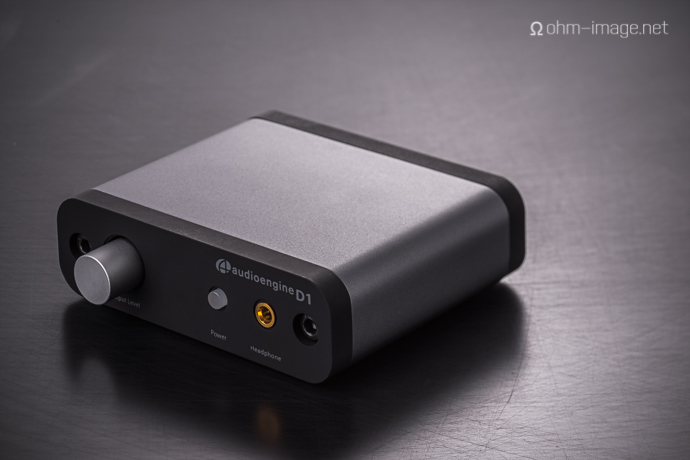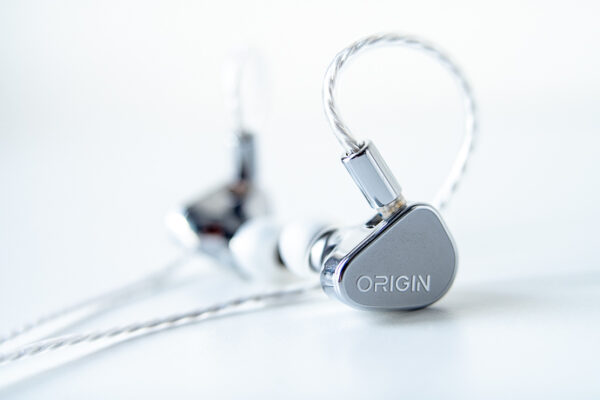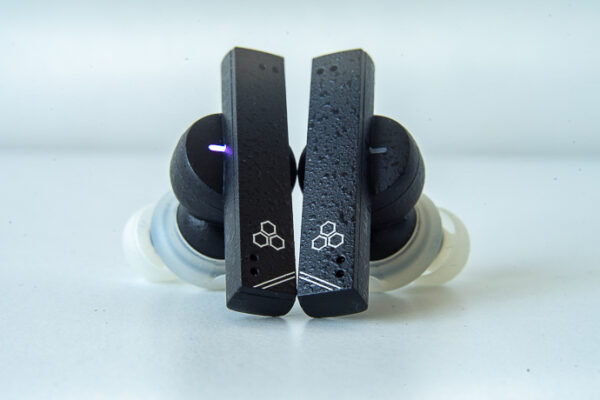Disclaimer: Audio Engine sent the D1 for the purposes of this review. I paid import duties and nothing else. The AudioEngine D1 goes for 169$. You can find out more about it here: D1 24-bit DAC.
Thanks to needing a cable the D1 doesn’t, like the D3 (reviewed here), require a reach-around on my iMac. And, thanks to its requiring pretty lax amperage, it works well with most devices capable of spitting USB signals. As the story goes, modern iPads and iPhones don’t spit the required amperage and can’t get the D1 running.
Inside is all the goodness of the D3, and a hell of a lot more. For one, it’s easier than ever to hook up a home HiFi thanks to a dedicated RCA output. Optical input keeps the D1 in the compatibility race. But 169$? Isn’t that ridiculous? I’ve had more expensive lunches. If price explains everything, you probably aren’t expecting much from the D1.
Time to expect.
The D1 is pretty damn awesome. It’s got the same basic performance of a D3 plus way better connection options, not to mention a volume pot, and no need for a reach-around.
Features
What the D1 gave up in simplicity it gained in pluggies. First, as long as you can power it from an external source, it works well with optical sources. Second is the RCA pair at the back, which make the D1 really easy to hook up to your favorite amp, HiFi, or TV.
If you have a Mac, it’s all just plug and play. I assume that with Windows you have to do some sort of driver stretch. I also assume that if you’re in the market for a DAC/headphone amp, you know how to do it.
The volume pot is nice to have even if it looks like a gumdrop. Like all AudioEngine stuff, it is grey. While it doesn’t play in its ballast, making the slightest of changes isn’t as simple as it should be. The volume pot seems to suddenly jump up by a decibel or more. That is to say that unlike an analogue pot, volume neither eases up, nor eases down. Users of sensitive earphones should be careful.
Just like the D3, the D1 resamples information higher than 96kHz to 192kHz. It does it flawlessly. It requires no tricks. It preserves the D1’s great plug’n play heritage. Native or no, I dig it.
Package and Accessories
Note: excepting price, the first part in this section remains largely unedited from my review of the D3. That is to say: the same niggles apply.
Every Audioengine product I have opened comes with smudges, fingerprints, and an ‘inspected’ sign. The thumb prints may be factory seals of approval. I’d rather there were none. At its current price of 169$, my feelings are ambivalent. Sure, I’d love Audioengine to, with a pristine package, prove to us that they care about perfection, but we are talking about a technological tour de force here. The D1 is small, and powerful. It performs based on those merits, not on satellite expectations.
Note: AudioEngine assure me that the fingerprints and other blemishes will be taken care of.
Despite not fitting into a pocket, the D3 comes with a bit of micro fibre that’s supposed to make it easy to stuff into pockets. I’m not sure why. Over the course of like Christmas and New Year and Chinese New Year, and the signing of my newest clients, which amounts to like 3 months, I’ve never, ever thought of taking the D1 on the road. Part of that comes down to me not owning a notebook computer. The other part is that the D1 doesn’t work all that well with smart-phones.
Would I carry it with me if I had a laptop? Probably not. It’s nice, but so is room for another camera battery. And if I wanted to keep the D1 safe and sound, I’d not put it in its cheap micro fibre pouch. I know I’m supposed to say: “nice touch”, but I just can’t. I’d rather see the savings passed onto a nicer package, and/or aluminum front and backs in lieu of the dust-happy soft-touch rubber facia.
Maybe it’s that I use Apple computers and shoot with Leica cameras- I’m not sure. But I feel that AudioEngine didn’t exactly nail the whole package beyond making what is obviously and violently serviceable.
That said, in recent years, Leica’s after-service has faltered. What used to be a limited lifetime guarantee has become two years. Still, it’s way better than what you get from Nikon, Canon, Fujifilm (some of which make you pay for their manufacturing faults), and others from Japan. AudioEngine is even better than Leica. The D1, D2, and D3 each come with three year guarantees.
Damn.
A measly 169$ and a three-year guarantee? Not bad.
Performance and sound impressions after the jump:








dalethorn
Maybe (probably) they’ve updated the D1 circuits. I had the original-production D1, then the D3, and thought the D3 had a smoother cleaner sound, but they probably share the same electronics now.
ohm image
There is a slight difference between the two, mainly that the D1 has a slightly less noisy signal, but by and large they are very equal. I have not heard an early production unit. But this one is impressive.
EDIT: misspelled ‘impressive’.
V__K
The D1 is my office trooper, pairs very nicely with the Atrio MG7s (That bass… so juicy!).
Agree with pretty much everything you described about the D1’s sound. It’s a very “fun” signature that is very easy to enjoy. I only wish it had a 1/4 inch output but for the price I don’t really mind.
ohm image
Yes, a 6,3mm jack would have been heavenly. So much power, it’s a shame it doesn’t have it. But brilliant otherwise.
dalethorn
I highly recommend the Grado adapters with the 6 inch cable.
Magor34
How does this compare to a Fast Track C400? My C400 is a bit larger than what I use it for (USB and Coax). The headphone amp sucks but the DAC on it is alright.
The D1 has all the inputs and outputs I need and looks like a better alternative in both sound and size. Thoughts?
dalethorn
Hmm, nobody answered yet. I had the D1, now have D3 and Microstreamer. The D1 is a very good DAC and amp, and probably even better with optical input. But the C400 as I understand it was made for low-cost music production, and I wouldn’t consider it a hi-fi amp. But without testing it, who knows?
Magor34
Yes, I also believe that the C400 was made for music production, not HiFi. Currently, I don’t do any kind of music production and don’t have any plans to do so in the near future. My C400 is mostly used for the coax input and the extra pair of RCA output.
My plan is to use just one unit. Which will work with the D1 since it has all the inputs and outputs I need, the optical input is just perfect for my PS4.
Unless I get an optical switch, I will use USB input for my desktop computer.
Previously I’ve had an O2+ODAC combo in mind for my setup but most of the models I’ve looked at have just one USB input or one pair of RCA inputs. I haven’t found an O2+ODAC unit with both RCA output, USB input, headphone jack and optical input.
If you have any other suggestions for a DAC and amp combo for around $200-$300 with optical input, I’m all ears.
dalethorn
Just be careful on the power issue for inefficient headphones. The D1 that I had (unless they upgraded it) got all of its power from USB-2, so the output to headphones is very limited.
Magor34
I don’t think that’ll be a problem for me. All of my headphones are around 60 Ohm or lower.
Most of the time, I use a pair of ATH-M50X, which doesn’t really need an amp. But I do prefer my standalone amp over the built in output of my computer and the amp on the C400.
But If I do find that the power is a bit weak, I guess I could use a standard USB Power Adapter and the optical input instead.
George
WHAT??? … “Output to headphones is very limited”… Are you kidding or what??? May I say that of the many USB powered DAC/Headphone amps the D1 is in the top 3 best powered amps. Sure, lots of USB headphone amps are prone to be under powered but the D1 isn’t one of them. Well at least that’s been my experience… And if you’re still not satisfied with the amp’s volume & power you can just use the optical input and stick a power supply in the USB input. It will blow your brains out…
Yubin Peng
could you compare it to the e10k?
ohm image
Sorry, I don’t have the E10K.
Matias
can this drive a beyerdynamic dt 770 (250 ohms)?
dale thorn
The D1 is pretty similar to a Dragonfly, and would drive a DT770-250 OK on some tracks, but you might have some that won’t play loudly enough. Audioengine says the D1 is good for headphones up to 300 ohms, but not 600 ohms. From my experience, the particular headphone makes more difference than the impedance. The DT770s are pretty efficient, so that’s a plus, but don’t forget the output is strictly USB power so there’s not much wattage. I don’t know of any USB DACs that are designed to draw more power from USB-3, but who knows? Most of the small DACs seem to target low-power sources like cell phones.